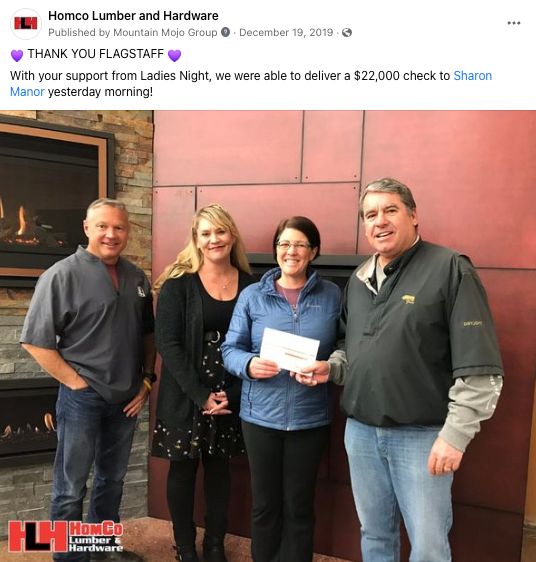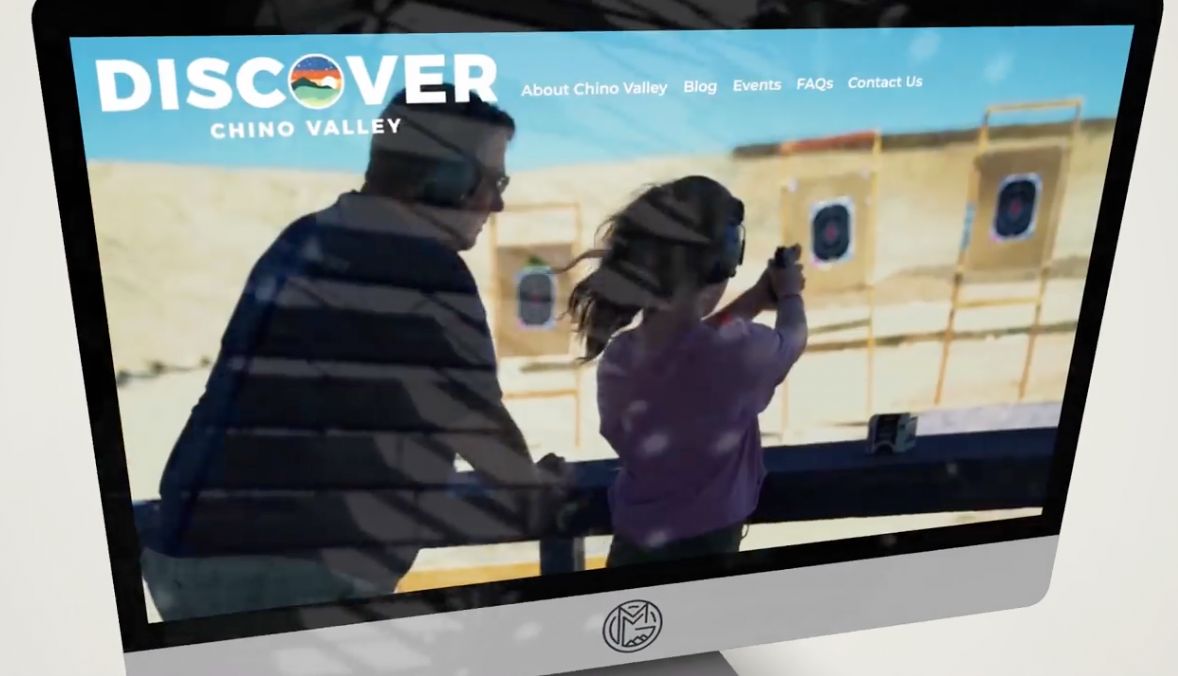It probably seems like there’s no way your small business’s website can compete with Amazon. In sheer numbers of products or worldwide reach, you’re right. You’d need to be an entirely different company with entirely different goals. But you are a vitally important small business in a local community, and your goals for reaching your clients are very different than Amazon’s. So like any good coach will tell you, play to your strengths.
Your website and social media are important tools that tell your story and show your customers (and potential customers) what makes your stores special and demonstrate that you provide something that consumers are seeking more than ever before – the intangible value of doing good, of supporting their neighborhood and their communities.
Amazon does not hold round-ups at the register and donate the money to local nonprofits. Amazon doesn’t go out of its way to help a customer fix her cane, deliver soil to someone’s home, or run over to help troubleshoot a new grill. But you can, and that’s how small businesses win time and again over Amazon – and any other box retailer. But if you don’t tell both your potential and current customers about all these other benefits, they won’t know.
We wanted to dive into this a little deeper, so we looked to two behind-the-scenes experts on our team, Michelle, who runs our social media campaigns, and Christina, our lead web developer. We asked them to share their experiential and number-driven data around what they know about how your website and social media presence can not just compete with Amazon but outcompete it.
PEOPLE ARE CRAVING MEANING
MMG: How can smaller businesses use social media to compete with Amazon?
Michelle: It comes down to representing the company’s culture and brand voice on social media. What they stand for, how they help the community, and what they do daily shows who they are – the team, the knowledge, and just how it feels to be a customer in their store. People are craving meaning and import. They want reasons to buy from companies who are socially conscious, but you have to tell them what you do and who you are beyond selling hardware – that’s the why that drives their decision and desire to buy directly from you instead of Amazon.
We see this all the time with independent authors. If an author has a good social presence, is authentic, and engages with her followers, her community will buy directly from her even when they can get the book cheaper on Amazon – because she puts herself out there and engages with her community. She becomes more than a book, just like your store becomes more than just a place to buy tools. There are employees, owners, families, and communities behind your brand. Shout that out to the world.
MMG: With a good social strategy, what kind of engagement can a small business create that Amazon cannot hope to match?
Michelle: Here’s a great example from one of our clients. Recently, a man in California bought a classic truck from a man in Bozeman, Montana. Turns out the seller had owned the truck for over 65 years and kept it in pristine condition. When the new owner got this truck, he discovered the original sales paperwork from 1950 and noticed a line ticket from Owenhouse Hardware Co. He Googled Owenhouse, found their website and Instagram, and learned they’d been in business in Bozeman for 143 years.
After reading about their long history in the town, he knew they would love to know about his truck. So here’s this guy who doesn’t even live in Bozeman, but he can tell from Owenhouse’s social presence that they care deeply about honoring their stores and their town’s history. He contacts them, and they post the truck on Instagram, and you can tell how excited they are about this small piece of their company’s history coming back to them. Amazon just can’t compete with this. It can’t create community and connection like Owenhouse and your store(s) can.
MMG: Amazon is so big. Is it even worth building a social campaign for a single or even multi-store store owner? If so, why?
Michelle: Well, we’re not really competing with Amazon. We’re playing an entirely different game. First, I want to know who their customer is, and then I want to know if they are trying to compete locally with other small hardware stores or bigger box stores. Because each is a slightly different approach, but either way, I would fight for having a social media presence because people want to give their money to things they believe in and stores or brands that resonate with their hearts.
So many people would rather give their hard-earned money to a local store with a clear set of values than a big company. But owners have to have a place to tell customers about who they are and what they’re all about. Social is the place to do this, the place to grow a community that extends beyond your brick and mortar, but is just that – an extension of who you are in your stores. People can see that online and want to buy from you because 81% of retail shoppers research their purchases online before they shop in your store or complete the transaction from you online.
MMG: What results/feedback do you get from clients and from other data on the effect of a Mojo social campaign?
Michelle: On the data side, engagement goes up exponentially. One client’s average engagement increased 192% over six months, and that’s commonplace. Experientially, owners report that employees take pride in an active and engaged social media account and that their teams are more engaged after seeing themselves on the company’s Instagram. They like being asked for their opinions (many campaigns include an employee-recommended product spotlight or other employee expertise), and they enjoy sharing their knowledge.
We see a marked improvement in engagement when we take a company from posting too broadly on topics – posts about their state, but not so much about their town, or about the national ACE sale and not about what’s in their store.
When we drill down on the post content and make the content hyper-local, it resonates more. People care about their communities, and they want to engage with a brand that shows its involvement outside of the store’s four walls – these types of posts build trust with your customers, and trust is vitally important to winning over Amazon.
We help our clients create campaigns that aren’t just about hardware but about the people who make up their stores and their neighborhoods. When a company builds up trust over a period of time, by sharing its values through the stories it tells about its community involvement, a culture that goes above and beyond (for customers and employees), humorous experiences, or expert advice that got a customer results, over time, that company can start to talk to people about the real ways in which it values and needs their support.
We see this not just with our clients but with other companies and brands on Instagram who get real and say, ‘Here’s what happens when I sell on Amazon, here’s how much money I lose, if you want to support me, buy through my website, here’s how much of a difference it makes to me.”
Companies that lay it out like that get results – but they wouldn’t get those results if they hadn’t developed that trust on social media first.
HUMAN CONNECTION, INTEGRATION, AND SPEED
MMG: How do you create a website and user experience from the back end (code, framework, software and function, servers, databases, and operating systems) that competes with a giant like Amazon?
Christina: Like we talked about in the post on increasing niche sales with a strong web presence, the way a small business’ website and user experience compete from the back end would be integration and speed – all the parts that need to work together like the cart, secure processing, and user flow are up to date and working at optimal speed, so the site loads well and feels secure to the user.
One of the biggest ways to compete with Amazon is showing that you are a local business and highlighting what makes you unique compared to the big giants, but at the same time, your site needs to be functioning just as well as theirs.
People want to choose local, want to buy from someone who is part of their community, and they will choose you unless:
- Your site doesn’t look secure for entering credit card information.
- Your user interface (the ease with which people can find what they need on your site, how up-to-date it looks, whether it looks inviting or not – the same exact things you make a priority in your brick-and-mortar stores). If your user interface is confusing, outdated, or rundown looking.
- Your site doesn’t have enough reviews or testimonials.
- If your site looks old or out of date, or untrustworthy – people do not want to get scammed and have their credit card information stolen.
If your site makes these mistakes, you will drive customers straight into an Amazon cart. So it’s imperative to stay level with Amazon on the backend of your site.
MMG: For you, what goes into developing a site that is personal and helps small businesses stand out from the competition?
Christina: Being able to tell a client’s story with personal touches like reviews, testimonials, and employee input, so there is a human connection throughout the website that feels unique to the business. It sounds simple, but it’s a very layered and ongoing process. Websites, though often static, are not a one-and-done project. They need consistent SEO care like your car needs consistent tune-ups, and they need consistent content upkeep.
MMG: Why is a well-designed and built website a key component for any small business that wants to grow?
Christina: It helps users get to know you and connect. They can see they are supporting local or supporting women-owned or minority-owned, and they feel good about choosing you over a big box because your website looks and operates professionally and securely while still being authentic and personal.
MGG: Tell us more about a website operating professionally.
Christina: A professional website has a big impact on the online reputation of a business. If I see a business whose site looks old, run-down, or out of date, I wonder what else they’re not taking care of. It’s a red flag for me, and I don’t want to put any of my private information in there.
Even if they have the little lock at the top that says their security certificate is up to date, when they’re not updating other things, I’m less likely to interact, give my email address, and open that exchange of information. And I am not alone in that, 60% of consumers will leave if any part of your site takes longer than three seconds to load, and the same goes for if it doesn’t feel secure or professional.
MMG: What about the absence of a website – what does that communicate to potential customers?
Christina: It communicates far beyond what people think it might. If someone has a site that’s out of date, but especially if someone doesn’t have a website at all, it gives people pause, and they wonder if the business is even real.
Social currency is imperative; without it, people wonder, “Is this a sketchy business or a reputable one?” And they won’t shop online or show up to your brick-and-mortar not knowing what they’re getting themselves into. Having a website proves you’re a real business these days – and not having one leaves people wondering, and that affects your bottom line.
MMG: What do you do on the backend that makes a Mojo website different from the rest?
Christina: Really being able to tell someone’s story. Mojo is a great choice if you’re unsure what that is because we help you develop that first before getting into the website. Only after we’re clear on that do we help tell the story. We also provide all the functionally we talked about earlier and all of the support and guidance you can expect from a larger marketing team. We try to help businesses take a step back and get the basics down first, so when they get their website up and running, we’ve already built a foundation for their business, not just their website.
MMG: What would change for a one- or two-store owner by having a really well-designed and optimized website?
Christina: On the backend, it is speed and SEO; on the front-end, it is UX. Speed is really important for a whole bunch of reasons; the most obvious though is the user experience, which allows your business to give a fast load to make users feel good about your company – that the experience is easy and seamless and we’re creating a good association with your company. Like I mentioned before, people will leave if your site doesn’t load fast enough – in under three seconds.
SEO is all about reach. The more people you reach and stay on your site because it’s fast and secure and tells your story, the more people will become your customers, but you need to make sure it’s available to all those people on all different devices. Speed boosts Google rankings, which is the most important aspect of organic search – that’s how you get more users just by having an optimized site. Because most people don’t scroll past the first few search results, much less click to the second page.
The goal is that no matter how many pages you have, you maintain proper optimization on every single page – that’s what we do here at Mojo. We help our client’s sites gain momentum and then we help them know what the next steps of SEO are – whether they choose to maintain their SEO with Mojo or do it on their own.
AMAZON DOESN’T HAVE WHAT YOU HAVE
So while Amazon is a giant, it can’t do what your smaller local business can – extend the unique, customer-centric, in-store experience of your brick-and-mortar locations to your online presence, capturing those 81% of people who want to browse or search your online store or your Instagram before purchasing. Telling the stories that highlight your values and culture – who you are as a company, how you care for and contribute to your community, your history, and your employees – this strategy wins every time because Amazon doesn’t have what you have.
The key is ensuring every single piece of communication – social media, website, and otherwise – is centered around the mission of authentically communicating your story and, through it, continually connecting with your customers on a personal level – something Amazon can never do.
If you are a local business competing with Amazon, we are here to help! Click below to set up a meeting with Rand to learn more about your digital marketing options.


Michelle has been with Mountain Mojo Group as the Lead Social Media Manager since 2020. Throughout her time here, she has led the efforts in social media, content writing, branding strategies, and graphic design for our clients in the Hardware Retail Industry.

Christina has been with Mountain Mojo Group as our lead web developer since 2020. She leads with five years of front-end web development and PPC advertising experience. Christina is a website UX/UI specialist and works directly with our Hardware Retail Industry clients to optimize their websites to meet the unique demand of their customer base.




